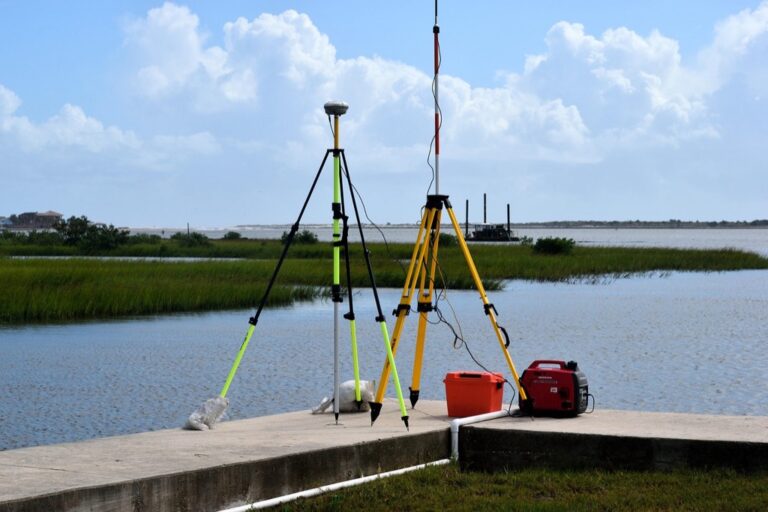5 Approaches to Map Accuracy in Large Teams That Pros Use
Why it matters: You’re managing dozens of team members across multiple projects and your mapping data keeps coming back inconsistent and unreliable. Large teams create unique challenges for maintaining geographic data quality that small groups never face.
The big picture: Traditional mapping approaches break down when you scale beyond a handful of contributors because coordination becomes exponentially harder and quality control systems get overwhelmed. Your team needs systematic approaches that work at enterprise scale.
What’s next: Five proven strategies can transform how your large team handles mapping accuracy from reactive fixes to proactive prevention.
Disclosure: As an Amazon Associate, this site earns from qualifying purchases. Thank you!
Establish Clear Data Standards and Documentation Protocols
Standardized protocols form the foundation of accurate mapping in large teams. You’ll eliminate inconsistencies and reduce errors by creating unified guidelines that every team member follows.
Define Consistent Mapping Conventions
Develop standardized naming conventions for layers, features, and attributes across all mapping projects. You should establish uniform coordinate systems, scale requirements, and feature classification rules that apply to every team member. Create specific guidelines for geographic feature representation, including minimum mapping units and topology requirements. Document acceptable data sources and their quality thresholds to maintain consistency. These conventions prevent data conflicts and ensure seamless integration when multiple team members contribute to the same project.
Create Comprehensive Style Guides
Build detailed visual style guides that specify symbology, color schemes, and cartographic design standards for all map products. You’ll need to document typography rules, legend formats, and layout specifications that align with your organization’s branding. Include examples of acceptable and unacceptable map designs with explanations of design decisions. Establish guidelines for different map types including web maps, printed materials, and interactive displays. Your style guide should cover accessibility requirements and ensure maps remain readable across various output formats and audiences.
Implement Version Control Systems
Deploy GIS-compatible version control systems like Git with ArcGIS or QGIS to track all data modifications and map iterations. You should establish branching strategies that allow parallel development while maintaining data integrity across team projects. Create automated backup protocols and change logs that document who made modifications and when changes occurred. Set up review processes where senior cartographers approve major data updates before merging into production datasets. Version control prevents data loss and enables you to revert problematic changes quickly.
Implement Collaborative Quality Assurance Workflows
Collaborative quality assurance workflows transform mapping accuracy from individual responsibility into systematic team accountability. You’ll need structured processes that catch errors before they propagate through your entire dataset.
Set Up Peer Review Processes
Peer review processes require you to assign specific reviewers for each mapping project based on expertise and availability. You should implement a dual-review system where one colleague checks technical accuracy while another validates data completeness. Tools like ArcGIS Online commenting features or QGIS project sharing enable real-time feedback exchange. Establish review timelines of 24-48 hours to maintain project momentum while ensuring thorough evaluation. Document reviewer assignments in shared spreadsheets to track accountability and prevent bottlenecks.
Establish Multi-Level Validation Checkpoints
Multi-level validation checkpoints create systematic quality gates throughout your mapping workflow rather than relying on final-stage reviews. You’ll need technical validation for coordinate accuracy and attribute completeness, followed by contextual review for geographic logic and feature relationships. Set up automated checks using FME Workbench or custom Python scripts to flag common errors like topology violations or missing required fields. Schedule milestone reviews at 25%, 50%, and 90% completion to catch issues early when corrections remain manageable and cost-effective.
Create Feedback Loops for Continuous Improvement
Feedback loops require you to systematically capture error patterns and process inefficiencies to prevent recurring quality issues. Track common error types using simple databases or project management tools like Trello to identify training needs and workflow gaps. Schedule monthly team meetings to discuss quality metrics and share solutions that worked well on recent projects. You should maintain error logs with root cause analysis to transform individual mistakes into learning opportunities for your entire mapping team.
Leverage Technology Tools for Real-Time Collaboration
Modern mapping platforms eliminate the bottlenecks that traditionally plague large-scale cartographic projects. You’ll transform your team’s coordination challenges into streamlined workflows through strategic technology adoption.
Utilize Cloud-Based Mapping Platforms
Cloud-based platforms like ArcGIS Online and QGIS Cloud enable simultaneous editing across your entire mapping team. You’ll access centralized datasets from any location while maintaining data integrity through built-in conflict resolution. These platforms automatically sync changes in real-time, eliminating version confusion that typically derails large projects. Your team members can collaborate on the same map layers without overwriting each other’s work, significantly reducing coordination overhead.
Integrate Automated Error Detection Software
Automated error detection tools like Esri’s Data Reviewer and FME Server catch inconsistencies before they compound across your project. You’ll configure custom validation rules that flag common errors such as topology violations, attribute inconsistencies, and coordinate system mismatches. These systems run continuous background checks on your datasets, alerting team members immediately when problems arise. Your quality control shifts from manual inspection to systematic prevention, reducing error propagation throughout large mapping initiatives.
Deploy Real-Time Synchronization Systems
Real-time synchronization systems ensure your entire team works with the most current data at all times. You’ll implement solutions like PostgreSQL with PostGIS or enterprise geodatabases that propagate changes instantly across all connected workstations. These systems maintain transaction logs that track every modification, allowing you to identify when and where changes occurred. Your team avoids the confusion of outdated datasets while maintaining complete visibility into project evolution.
Develop Comprehensive Training and Onboarding Programs
Building strong mapping capabilities requires structured learning paths that transform new team members into skilled contributors while maintaining accuracy standards across your entire organization.
Create Standardized Training Modules
Standardized training modules ensure every team member learns the same mapping protocols and quality standards. You’ll develop consistent workflows by creating step-by-step tutorials covering your organization’s specific GIS software, data standards, and cartographic conventions. These modules should include hands-on exercises using real project datasets, video demonstrations of complex procedures, and assessment checkpoints that verify skill acquisition. Document common error scenarios and their solutions within each module to prevent recurring mistakes across your mapping team.
Establish Mentorship Pairing Systems
Mentorship pairing systems accelerate skill development by connecting experienced cartographers with new team members. You’ll assign senior mappers to guide newcomers through complex projects, providing real-time feedback on mapping decisions and quality control processes. Create structured check-in schedules where mentors review work progress, discuss technical challenges, and share advanced techniques. This approach ensures knowledge transfer while maintaining project momentum and helps new team members understand your organization’s mapping culture and unwritten best practices.
Conduct Regular Skill Assessment Updates
Regular skill assessments identify knowledge gaps and ensure your team stays current with evolving mapping technologies. You’ll implement quarterly evaluations that test both technical competencies and adherence to your mapping standards. Create practical assessments using current project scenarios, evaluate proficiency with new software updates, and identify areas where additional training is needed. Track individual progress over time and adjust training programs based on assessment results to maintain high accuracy standards across your expanding mapping team.
Monitor Performance Through Data-Driven Analytics
Quantitative assessment transforms mapping workflows from reactive troubleshooting to proactive quality management. Analytics provide objective insights into team performance patterns and accuracy trends that manual oversight often misses.
Track Accuracy Metrics and KPIs
Accuracy metrics establish measurable benchmarks for your mapping team’s performance across projects. You’ll want to monitor positional accuracy using root mean square error (RMSE) calculations and attribute accuracy through completeness percentages. Set specific targets like maintaining sub-meter accuracy for field surveys or achieving 98% attribute completeness for database entries. Track these metrics weekly using tools like ArcGIS Data Reviewer or custom Python scripts that generate automated accuracy reports.
Generate Regular Quality Reports
Quality reports consolidate performance data into actionable insights for team management and client communication. Create weekly dashboards using Power BI or Tableau that display error rates, completion times, and accuracy trends across different project types. Include comparative analysis showing individual cartographer performance alongside team averages. Schedule monthly comprehensive reports that identify recurring issues, highlight improvement areas, and document successful quality control measures for stakeholder review.
Implement Corrective Action Plans
Corrective action plans address identified performance gaps through systematic intervention strategies. Develop standardized response protocols when accuracy metrics fall below established thresholds, such as additional training sessions or workflow adjustments. Create escalation procedures that trigger when error rates exceed 5% or completion times extend beyond project deadlines. Document all corrective actions in project management systems like Monday.com or Asana to track resolution effectiveness and prevent recurring issues.
Conclusion
These five approaches transform how your large mapping team maintains accuracy and consistency. By implementing standardized protocols technology solutions and data-driven monitoring you’ll shift from reactive problem-solving to proactive quality management.
Success requires commitment across all team levels. Start with the approach that addresses your most pressing challenge whether that’s establishing clear standards or implementing collaborative workflows. Each strategy builds upon the others creating a comprehensive framework for mapping excellence.
Your team’s accuracy will improve dramatically when you combine systematic processes with the right tools and training. The investment in these approaches pays dividends through reduced errors faster project completion and stronger client relationships in your mapping operations.
Frequently Asked Questions
What are the main challenges of managing geographic data quality in large mapping teams?
Large mapping teams face coordination difficulties, inconsistent data standards, overwhelmed quality control systems, and struggles with maintaining reliability across multiple projects. Traditional mapping methods often break down as team size increases, leading to reactive problem-solving rather than proactive prevention of data quality issues.
What are the five proven strategies for improving mapping accuracy in large teams?
The five strategies include: establishing clear data standards and documentation protocols, defining consistent mapping conventions, creating comprehensive style guides, implementing version control systems, and developing collaborative quality assurance workflows. These strategies shift focus from reactive fixes to proactive prevention of mapping errors.
How do standardized mapping conventions help large teams?
Standardized mapping conventions ensure seamless integration by establishing uniform naming conventions, consistent coordinate systems, and clear guidelines for geographic feature representation. This eliminates confusion between team members and reduces integration errors when combining work from different contributors across multiple projects.
What role does version control play in geographic data management?
Version control systems track data modifications, maintain data integrity, and enable efficient collaboration. GIS-compatible tools allow teams to monitor changes, quickly revert problematic modifications, and ensure all team members work with the most current datasets while maintaining a complete history of project evolution.
How can cloud-based mapping platforms improve team collaboration?
Cloud-based platforms like ArcGIS Online and QGIS Cloud enable simultaneous editing, provide centralized access to datasets, and reduce coordination overhead. These tools offer real-time synchronization, maintain project visibility, and prevent confusion from outdated datasets while supporting multiple team members working concurrently.
What should be included in a comprehensive mapping team training program?
Training programs should include standardized modules covering mapping protocols and quality standards, hands-on exercises with skill assessments, mentorship pairing systems connecting experienced cartographers with newcomers, and regular skill evaluations to identify knowledge gaps and ensure teams stay current with evolving technologies.
How can teams implement effective quality assurance workflows?
Effective workflows include peer review processes with designated reviewers, real-time feedback tools, established review timelines, multi-level validation checkpoints, automated error detection, and feedback loops that capture error patterns. This transforms mapping accuracy from individual responsibility to systematic team accountability.
What metrics should mapping teams track to monitor performance?
Teams should track accuracy metrics, key performance indicators (KPIs), error rates, completion times, and quality benchmarks. Regular quality reports consolidate this data into actionable insights, while corrective action plans address performance gaps when metrics fall below established thresholds.






